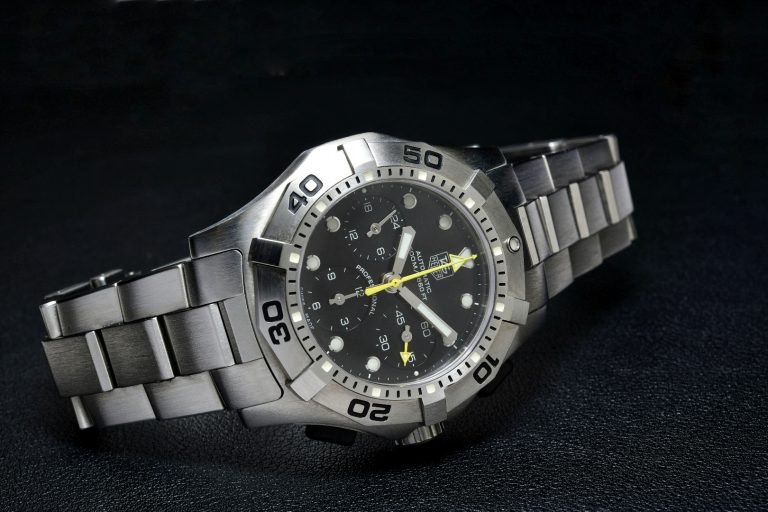The pursuit of a particular watch can be prompted in many ways – sometimes it is sparked by a glimpse of something unknown in a magazine, or even sometimes in a moment of idle self conversation when I question the possibility of whether a particular set of features had ever existed together in one watch.
I was to ask one of these questions recently, and the journey to answer it would put me on a path to discover a hidden gem.
That question was: Given the number of diving chronograph watches available with pushers secured by screws that prevented their activation underwater, were there any watches that instead allowed the full use of every complication on board underwater, including the chronograph, to its full rated depth?
It’s common knowledge of course that most chronographs have pushers that should not be used underwater, since the extra holes made by the pushers in the case require some kind of unique system to prevent the intrusion of water. To answer this question, it was down the rabbit hole of the internet that I went, and I emerged on the other side finally finding perhaps the best TAG Heuer ever made – the Aquagraph from 2003!

Have a look at this video advertisement of the watch:
So let’s summarise what we’ve learnt from the video so far. The Aquagraph is a 500 metre water resistant diving watch with a chronograph as its main complication. Along with these, the special diving features include a helium escape valve, a safety indicator for an unscrewed crown, a locking unidirectional diving bezel, a chronograph with a centrally placed minute hand, and lastly, chronograph pushers that can be used underwater. So tell me this – is there anything available on the market right now that you can buy that has all these features together in one watch aside from this one?

In fact it is the sum of all these features together that make the Aquagraph a uniquely focused and hardcore diver watch. Let’s look at these more closely one by one.
1. Coloured gasket on the crown tube as a safety indicator
The screw down crown exists to secure the watch from water intrusion, but sometimes after unscrewing it to adjust the time, things can happen to distract, and one can forget to return the crown to the safe position. How the Aquagraph prevents this is via the use of a coloured gasket on the crown tube that is visible from the front of the watch when worn. The bright yellow gasket matches the hands and it’s hard not to miss. When the crown is screwed in, that splash of yellow disappears from view. Interestingly, early versions of the Aquagraph came with a red gasket instead.
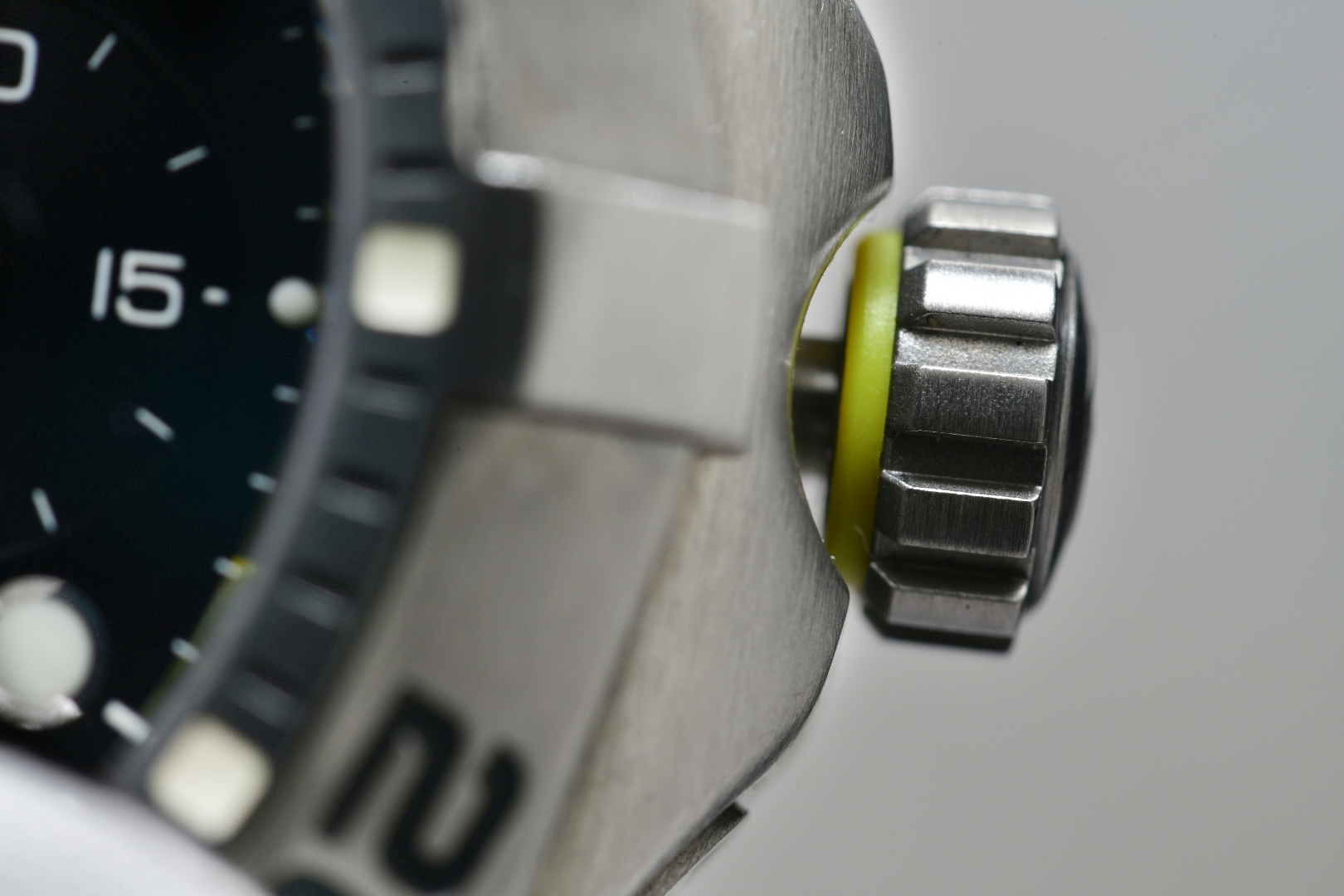
2. Locking Unidirectional Bezel
A unidirectional bezel is par for the course on a dive watch and it only turns one way (anti-clockwise) so that a dive session is shortened in cases when the watch is bumped, and this for safety reasons. The Aquagraph goes one further by having the bezel locked in its default state. Need to rotate it to start measuring your dive? Press down on the numerals and the inner ring under the bezel arms goes down, allowing you to turn it to the position that you want. The bezel is a 60-click one and due to the locking mechanism which requires some effort to engage, has to be done deliberately, which is a good thing for safety minded divers.
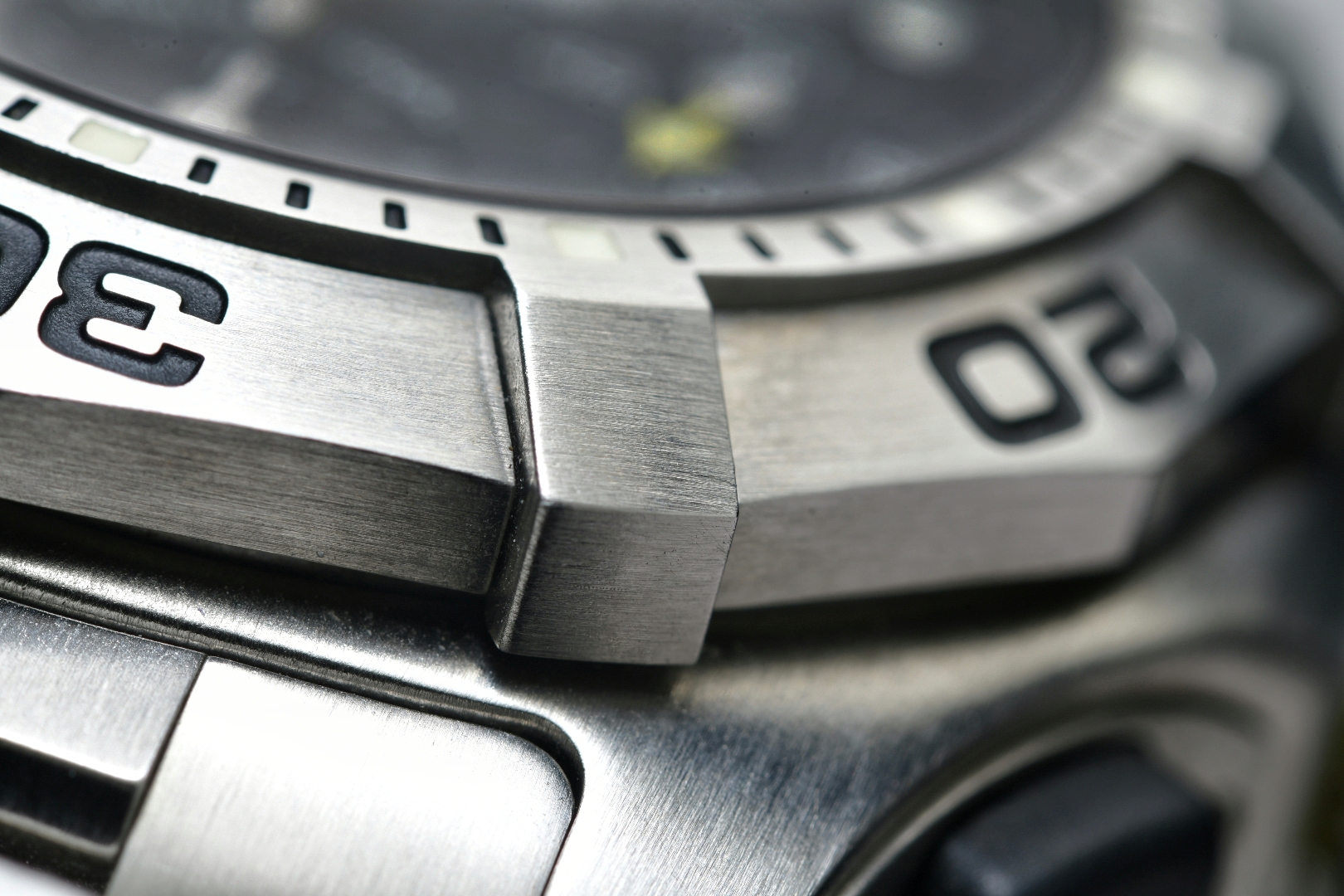
3. Chronograph Pushers that can be used underwater
The best feature of the Aquagraph is certainly the fact that the chronograph pushers can be used underwater. How is this achieved? As you can see from the pictures below, the pushers are protected by rubber boots. These rubber protectors are easily replaceable at service time as evidenced by the screws that hold them down. Yes, while this is a bit of a pain to do since rubber deteriorates over time. However it is for serious divers at least, who are used to maintaining their equipment properly, something that can be forgiven given the functionality that you get from the watch.

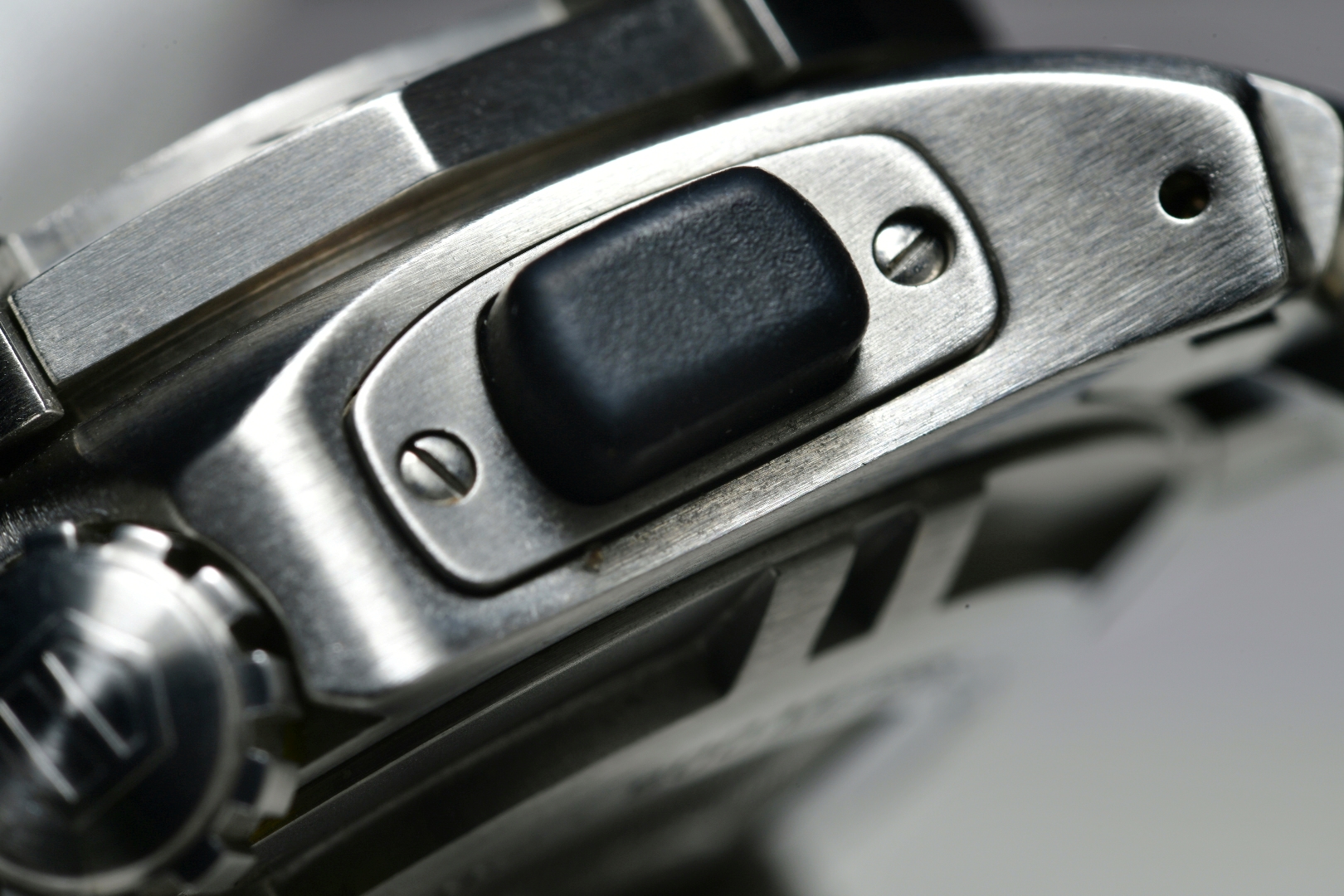
4. Highly readable central chronograph minutes hand
The fact that the chronograph on the Aquagraph is usable underwater is a great thing. Yet when you combine this with yet another one feature, the central chronograph minute hand, we find that it brings the level of utility of this diving tool to a level that can claim a place one of the best diving watches ever made, short of sporting a depth gauge as well.
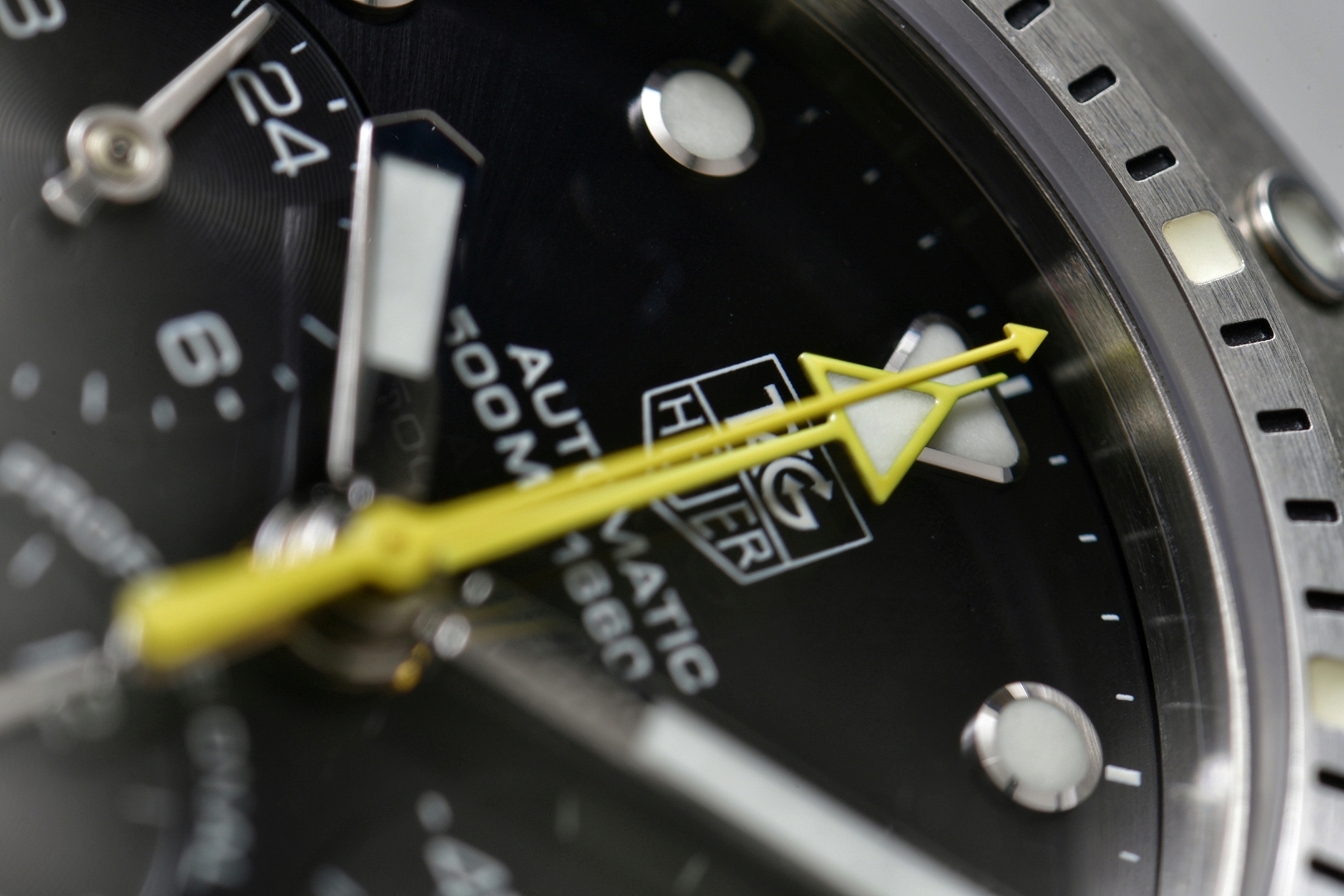
Why is this so? Consider the situation from the point of view of a diver using the watch. Sure, the overall dive time can be measured via the bezel in the same way that all dive watches do. However there will be situations in which it is necessary to time a separate event. The bezel could be used for this, but doing that would disrupt the measurement of your overall dive time and is potentially hazardous.
With a diving chronograph that can be used underwater, you could start the chronograph to measure a specific event – for example, say you want to spend 5 minutes exploring a cave that you’ve come across. Or in another more common example, as I’ve heard from professional divers before, you can use the chronograph to measure short intervals of time for a decompression stage while ascending, all while keeping the overall dive time measured by the bezel in place and untouched.
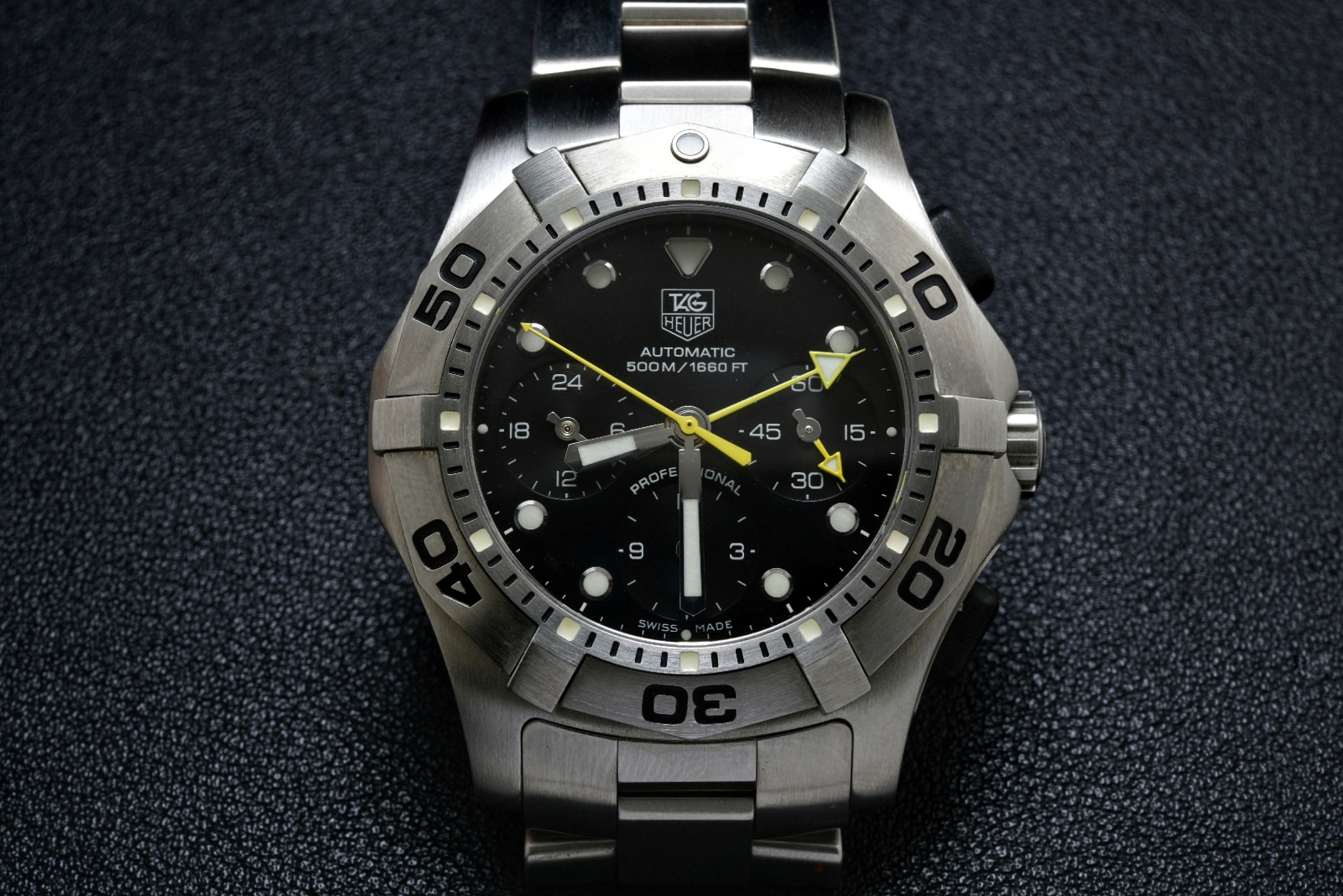
But then you say, there are other chronographs that allow you to measure a separate time interval that do that, that can be used underwater. Yes, but none give you the ability to see the minute hand as clearly as the Aquagraph. Most minute chronograph hands are located in a small sub-dial and require one to bring the watch closer to your dive mask to see clearly. Reducing the risk of reading the wrong time is paramount in a dive situation of course, and you avoid that with the Aquagraph, which has a minute hand that is visible from as far away as you can read the time. It makes a big difference to legibility and by extension, safety. In this respect, perhaps the only two watches that fulfil this criteria are the Sinn U1000 – which has a relatively large minute sub-dial at 6 o’clock, or even better the IWC Aquatimer Split Minute Chronograph (IW3723-04), which has a second minute hand tucked under the main minute hand, that stops in place to mark the start of an interval when engaged. I personally prefer the IWC system over the Sinn, and rate it as highly as that on the Aquagraph.
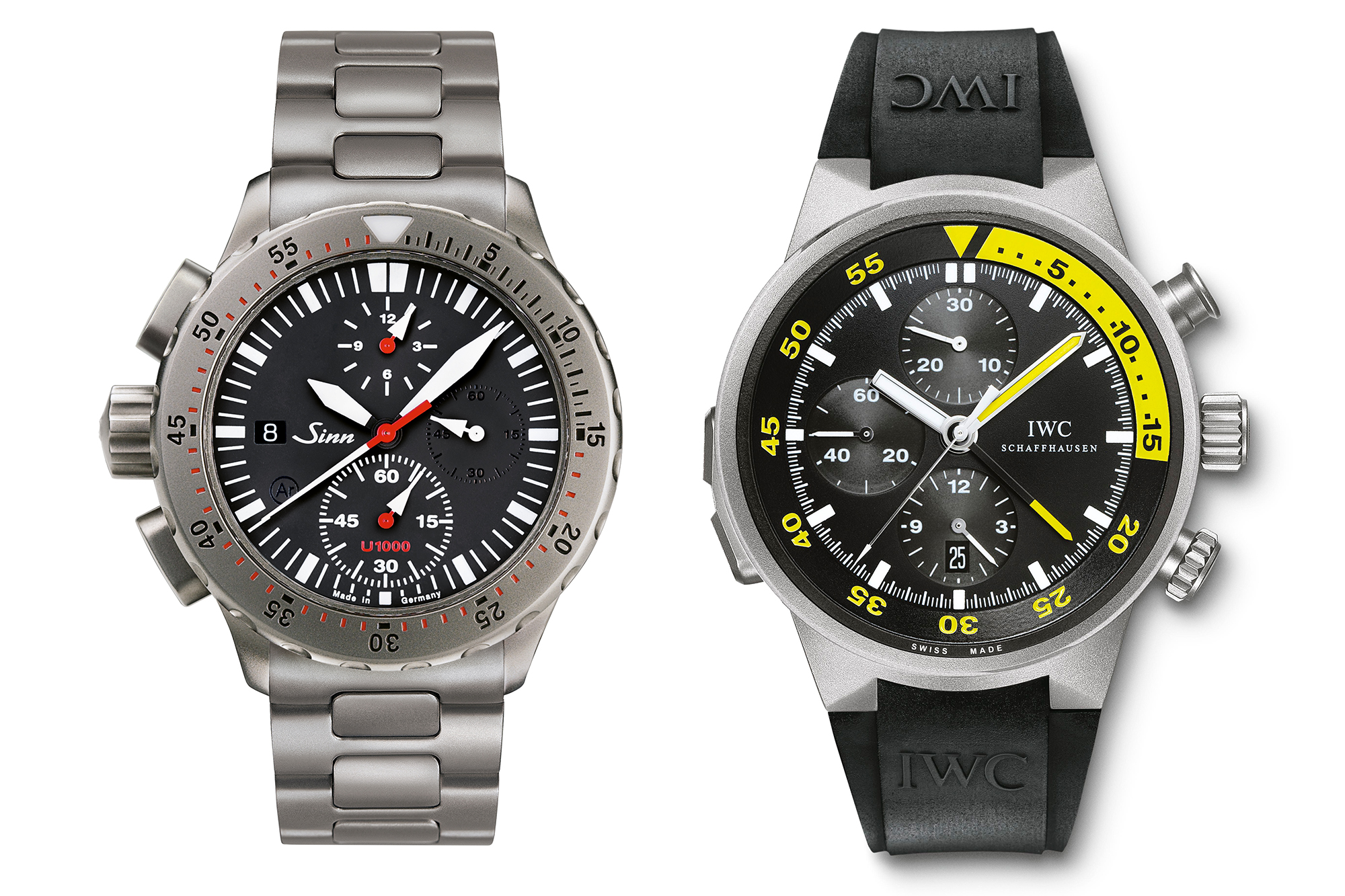
The central chronograph minute complication in the Aquagraph is achieved via an ETA 2892-2 base movement with a Dubois Depraz 2073 chronograph module stacked on top. TAG Heuer calls this movement sandwich ‘Calibre 60’, and it has only been used thus far in this watch. While the modular nature of the movement doesn’t allow a date function, which is perhaps one of the biggest downsides of the watch, it is a serviceable solution to achieve the central chronograph minute complication given that not many integrated chronograph movements exist that can do that. The most famous is of course is the Lemania 5100.
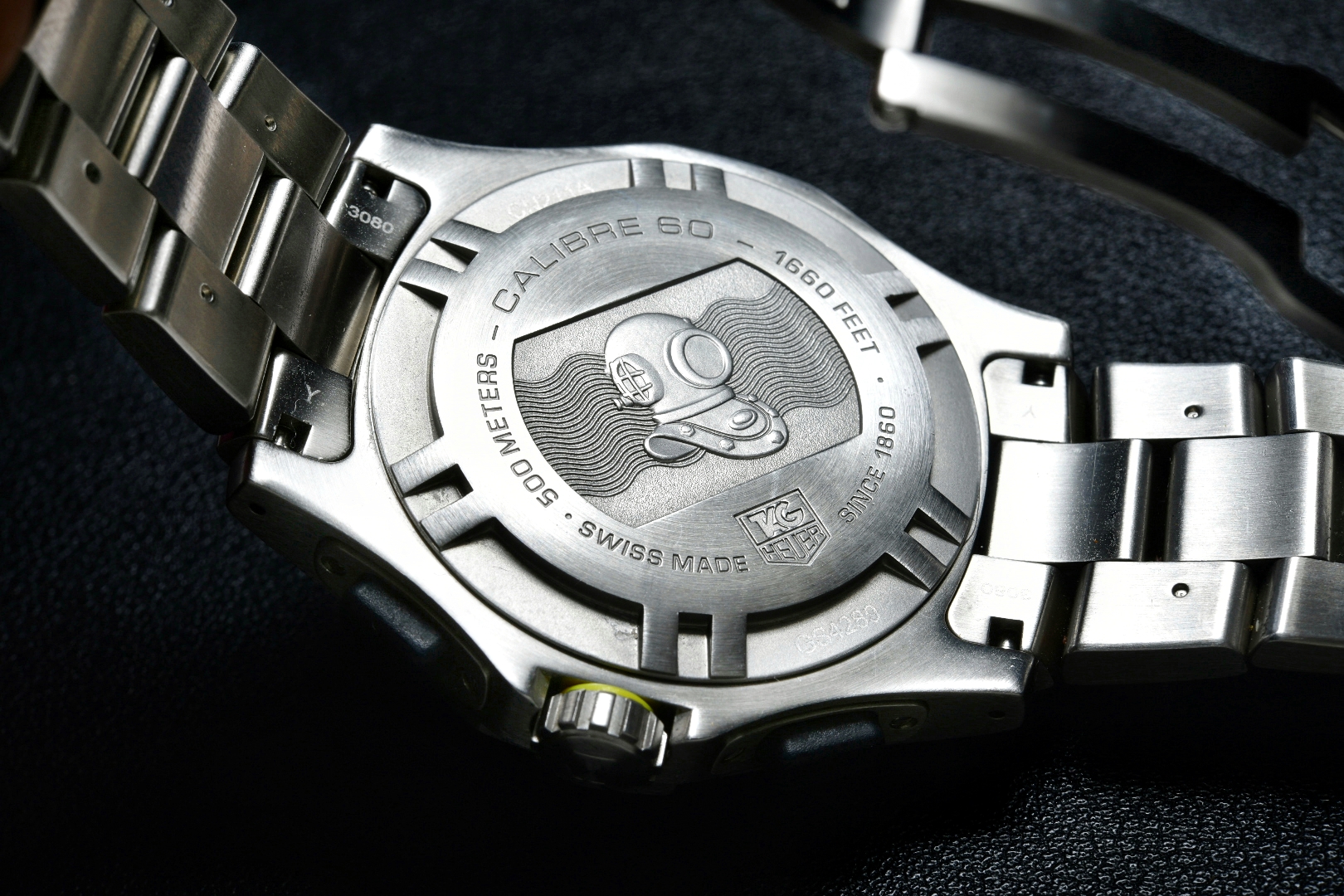
5. Lumed bezel
The Aquagraph comes with a bezel that is lumed, and it is achieved via lume plots that are placed into the bezel. The lume glows very bright and it is quite a light show in the dark. However these additional lume plots for me are quite distracting (despite how cool they are) and they have a tendency to get worn off over time or through polishing (as I have seen in some used examples of this watch), since they are exposed.
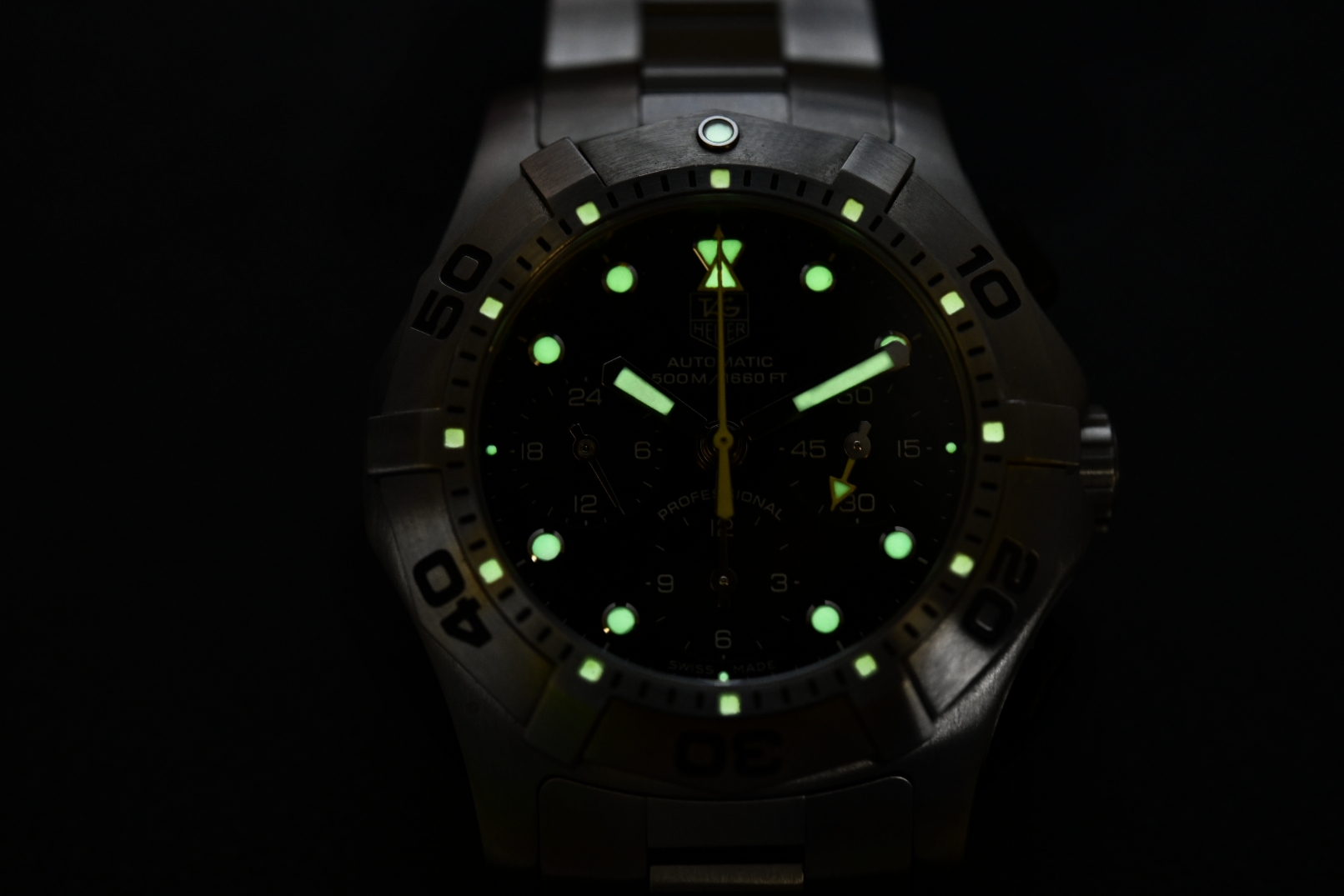
That being said, the lume on this sample that I have still glows like a torch at night, even though it was originally purchased (by the first owner) in 2008.
The wearing experience
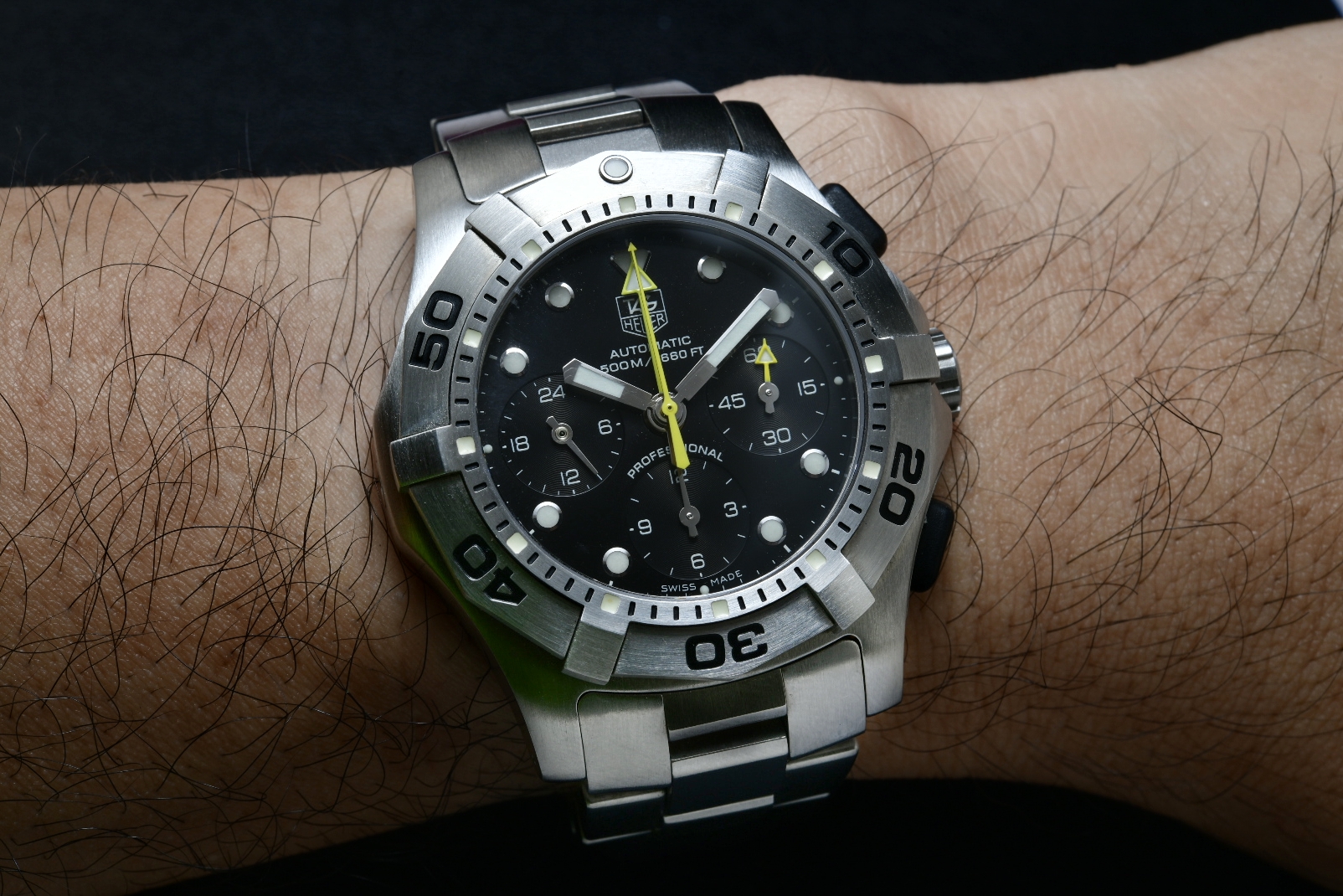
Even though the watch measures 43.2mm, it feels surprisingly compact. The reason for this is that most of its mass is built upwards instead of side to side, which accounts for the 16mm thickness. Of note is the weight of the watch on the wrist, as it is surprisingly heavy, coming in at 220 grams on a bracelet, albeit sized for my wrist. As a comparison, my Rolex Explorer 2 (16570) comes in at about 139 grams (sized for my wrist).
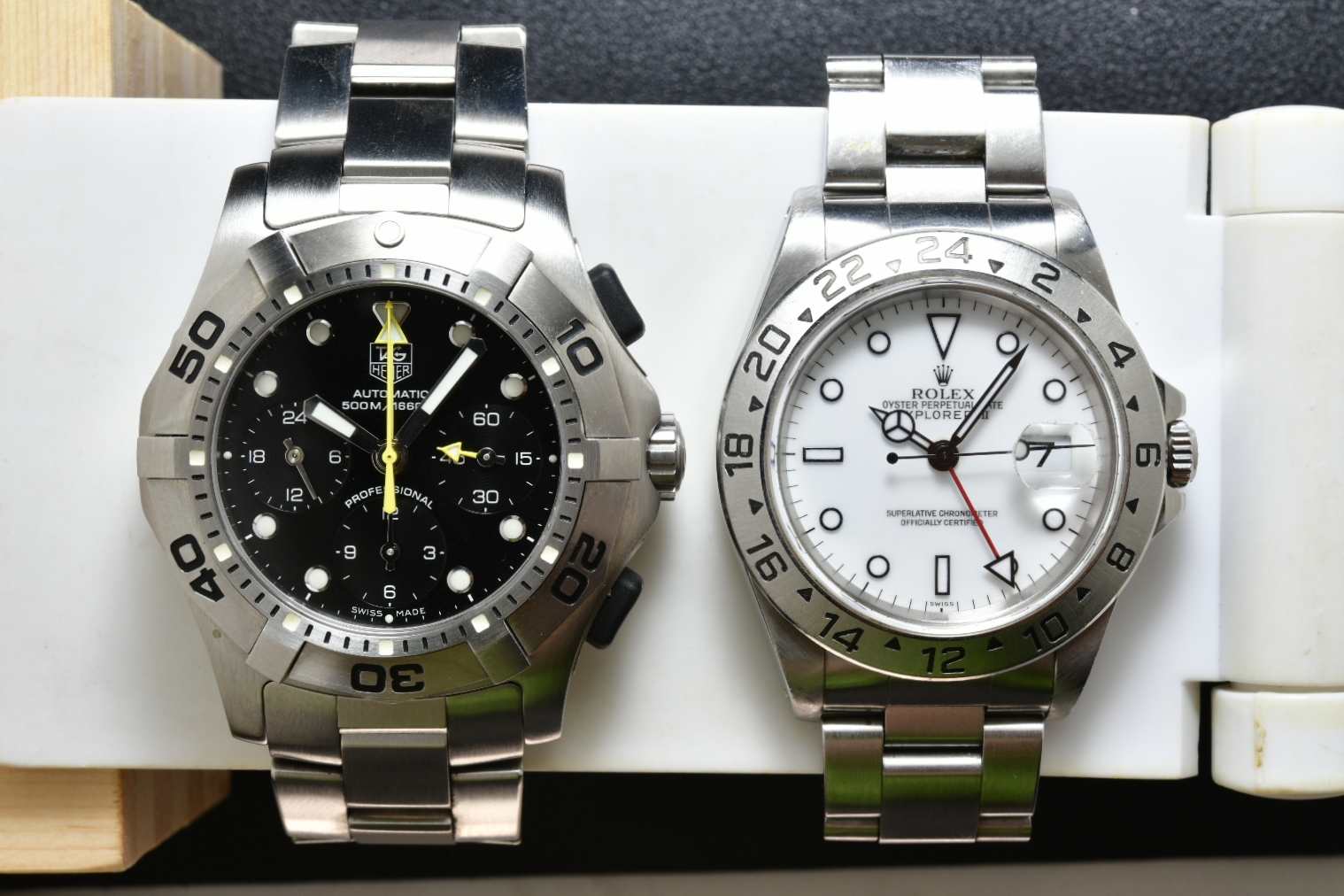
Although as you can see in this picture below, there is quite a difference in the thickness between the two watches, with the Rolex Explorer 2 coming in at at 12mm vs the 16mm of the TAG Heuer Aquagraph.
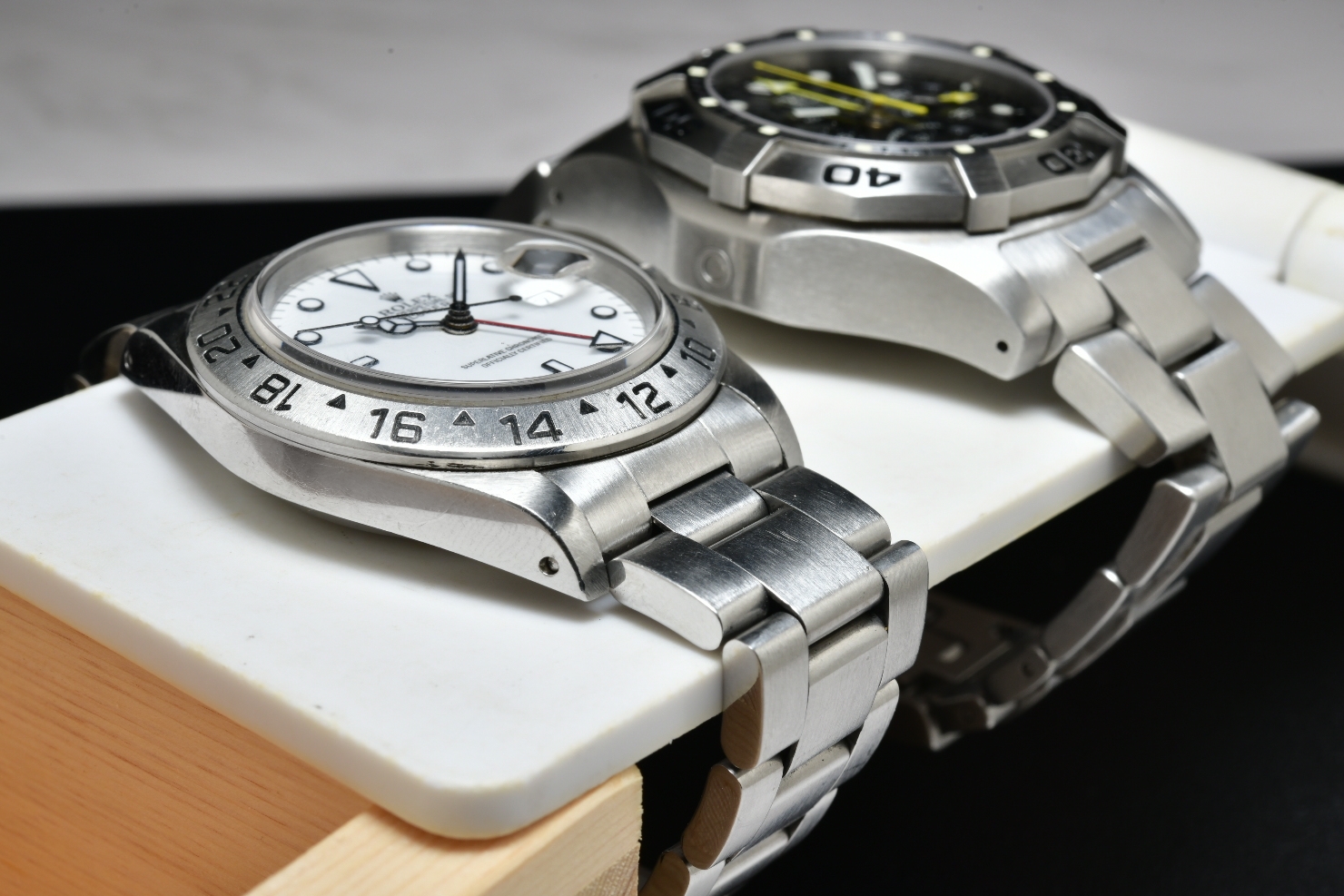
The weight makes itself felt while worn, which perhaps explains how tough and overbuilt it is, perfect for withstanding crushing depth at 500 metres underwater. It was also, as some have said, been tested by the US Navy Seals, although this claim is unverified. Certainly, the watch feels tough enough for me to see how there might be an element of truth to this.
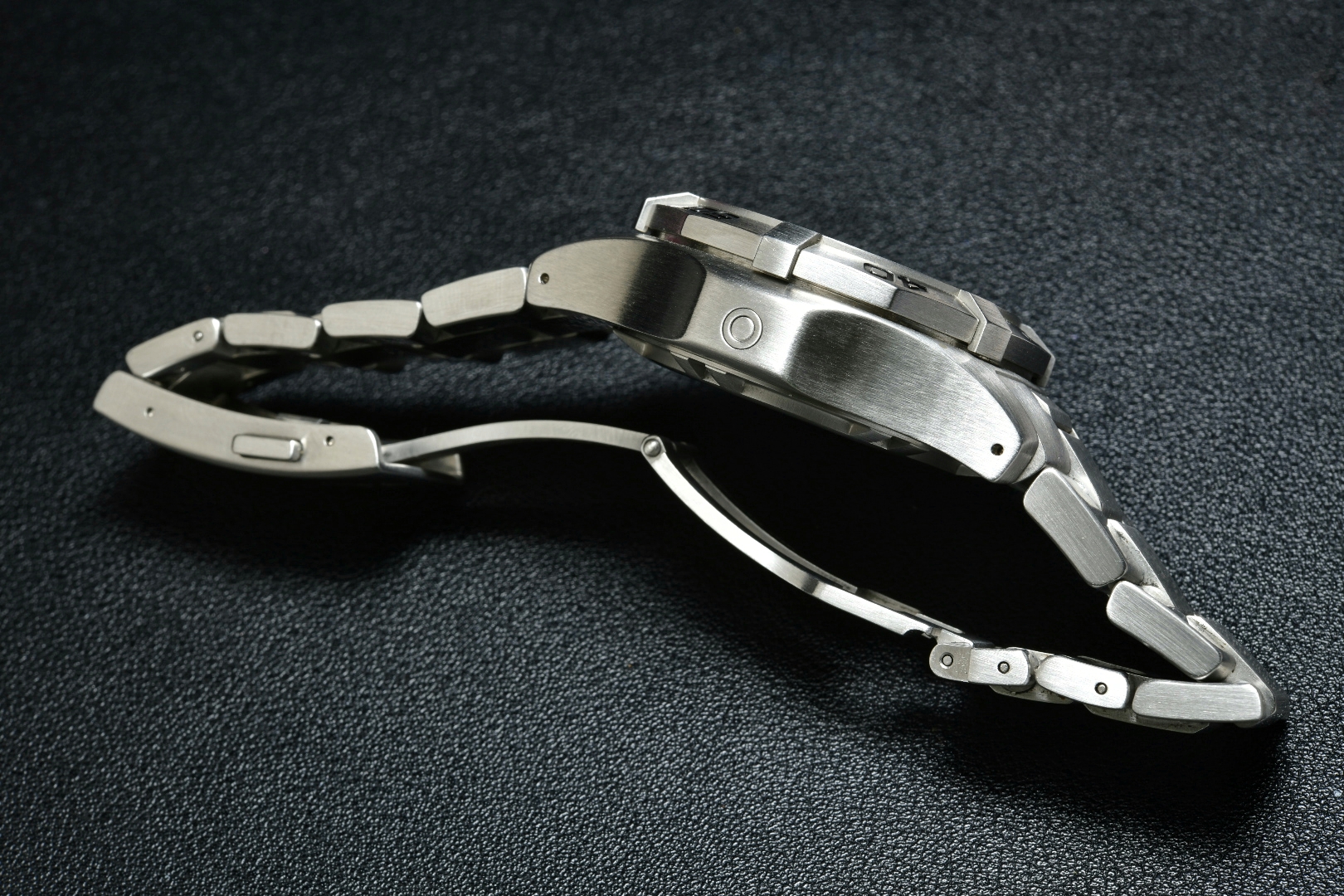
The bracelet has a diver’s extension that adds about a link in length, and a dedicated rubber strap option is also available depending on the kit that you bought it in, which I have heard is very well designed.

The TAG Heuer Aquagraph was a watch introduced by the brand in 2003, and was available in the catalogue until about 2009 when it was discontinued. The watch traces its lineage to the two other most significant TAG Heuer diving watches ever made, the Heuer/ TAG Heuer 1000m (Spirotechnique) and the Heuer/ TAG Heuer Super Professional. In fact, if you compare them, you can see in the Super Professional some similarity in the lines of the case, the crown guard, and the inclusion of the rider tabs.
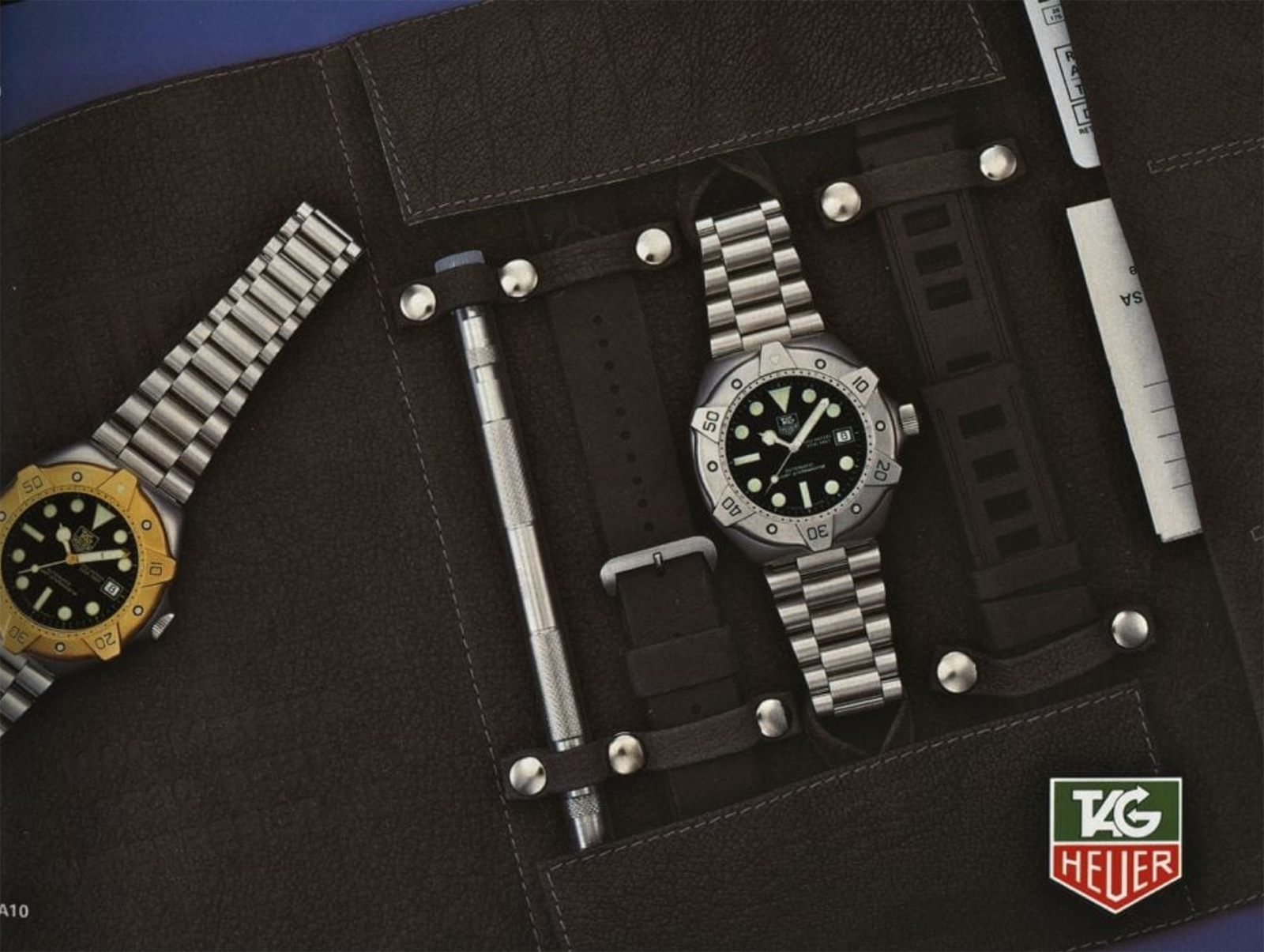
There is no date function on the Aquagraph as I have mentioned, but this is acceptable given what it was designed to do. In fact the sub-dial on the left illustrates its focused nature as it is an am/pm indicator, indicating the time on a 24-hour basis in order to tell the wearer if it is day or night. I can see how this is useful in certain instances such as in cave diving.
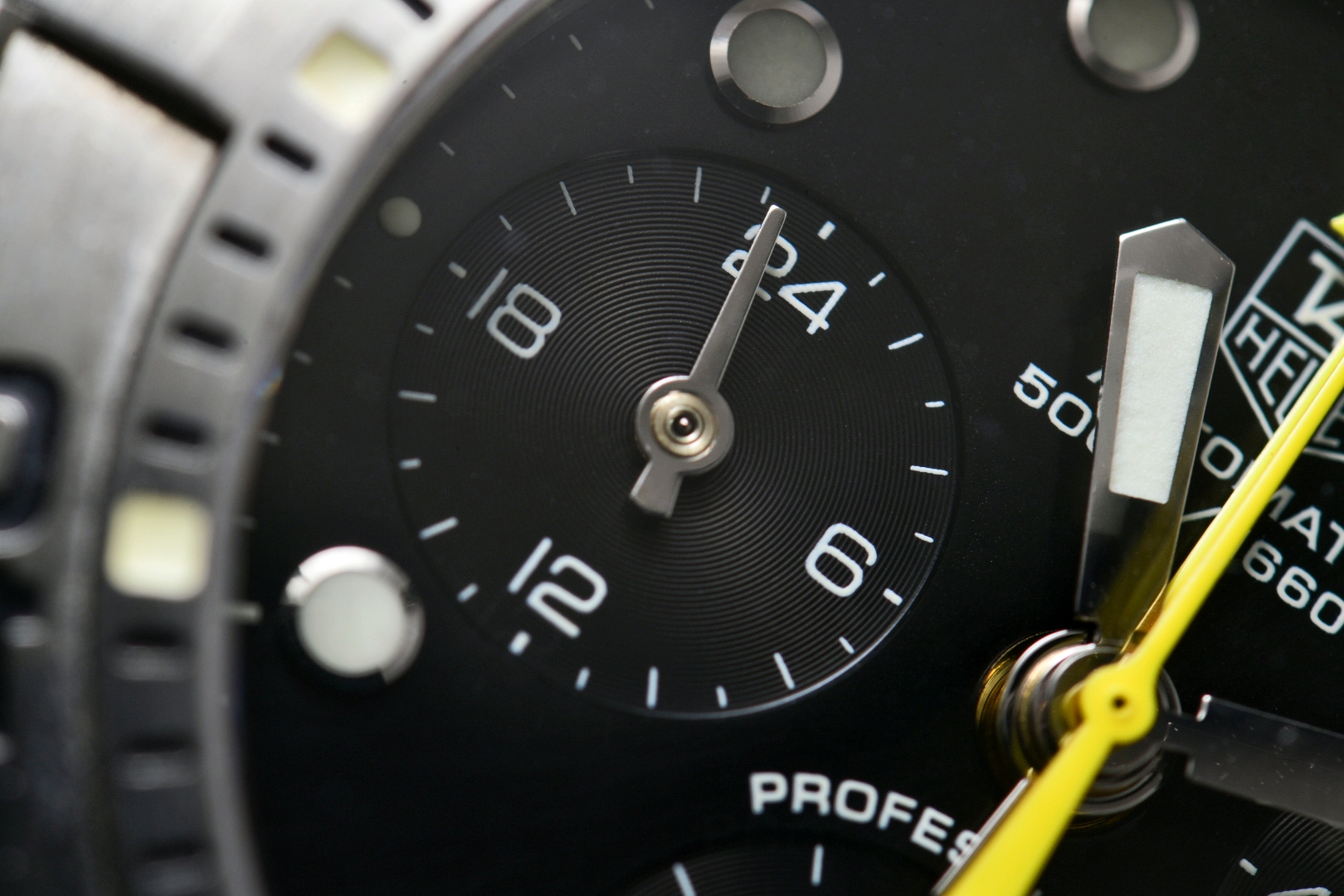
Negatives? It’s been reported on watch forums that the crown touches the wrist, due to the modular movement which makes it necessarily sit lower. The other thing are the user reports that say that the crown threads can stripped easily. These have so far been non-issues for me.
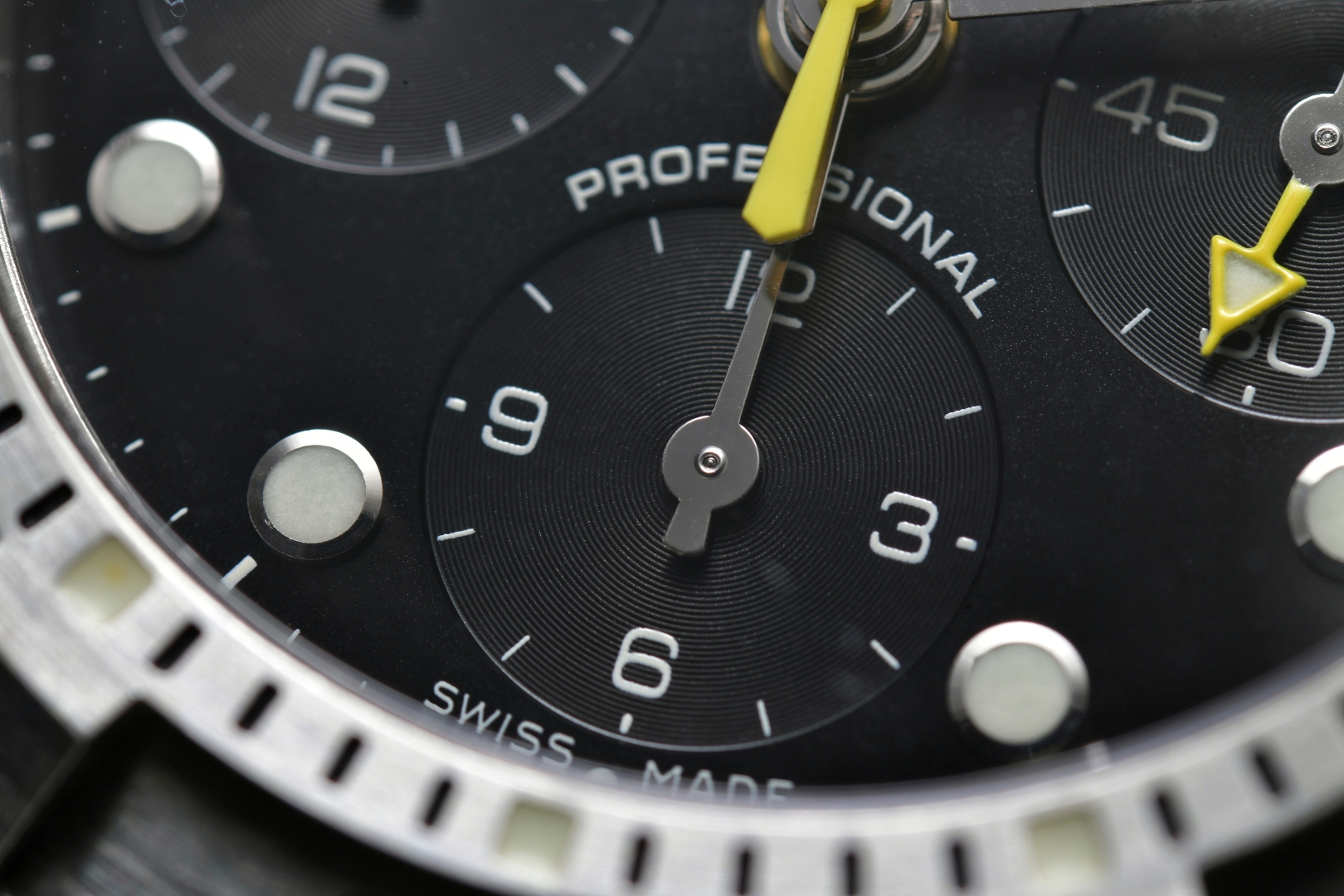
I personally find the watch comfortable and relatively small compared to most diver watches today, which is a huge plus. Furthermore the central chronograph minute is very useful in timing various tasks on a day to day basis. Unlike most water resistant chronograph watches that have pushers that need to be unscrewed before use, the Aquagraph’s chronograph can be engaged anytime, and without fear of compromising the water resistance. Lastly, this is a watch that measures to a full 12 hours, meaning that most timing duties are within its capabilities.
A bargain for the best TAG Heuer ever?
The best thing of all about the Aquagraph is how it can be found relatively cheaply nowadays, between 2000 to 4000 USD depending on condition. This price level, given what it can do is quite amazing, and honestly the watch is unvalued for what it is.
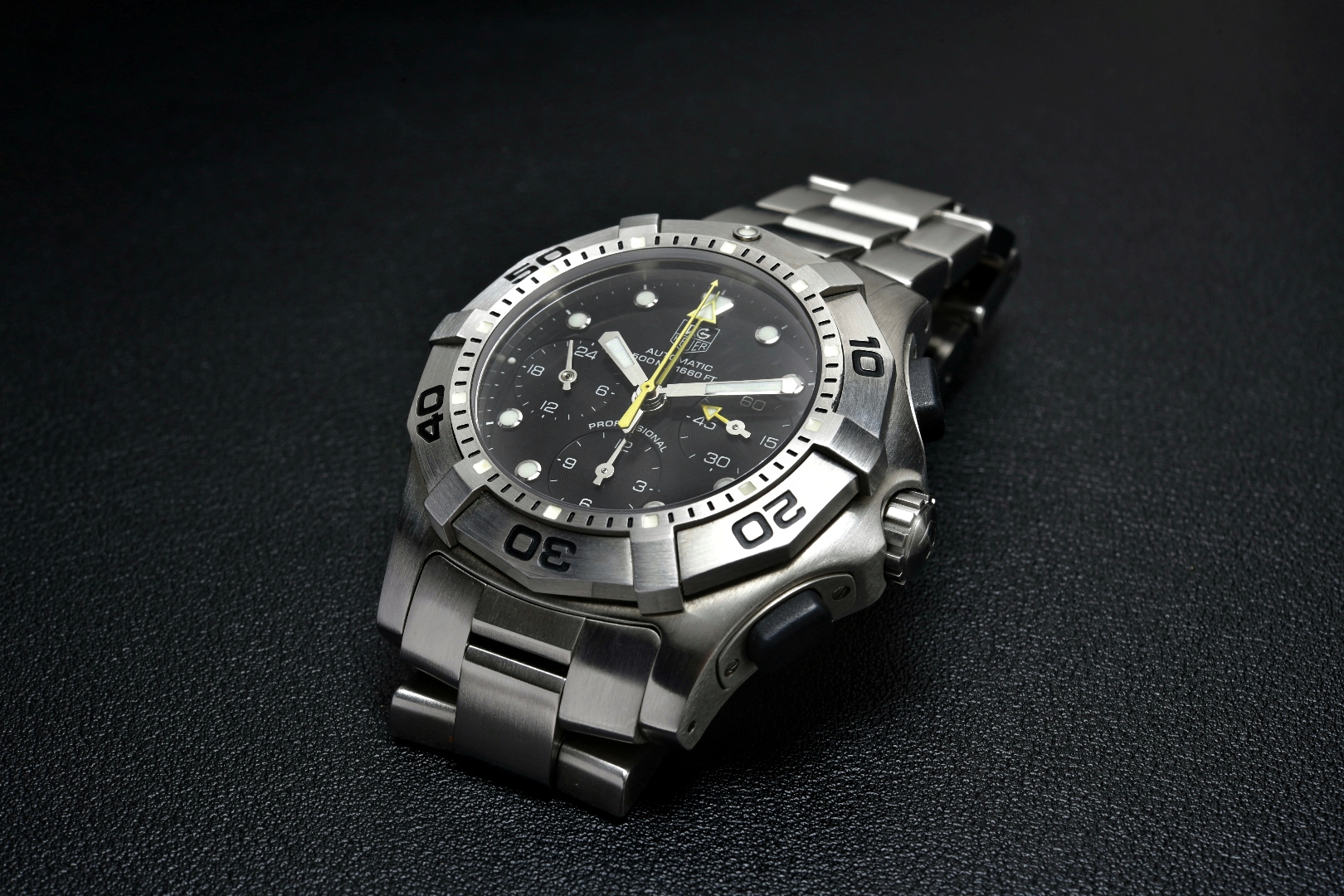
Many owners have hailed this as the best diving watch ever made and also the best TAG Heuer watch ever. I’m inclined to agree since my journey into the rabbit hole actually resulted in me buying this sample that you see here.

One final thing
It seems that diver chronographs that can be used underwater are quite a rare breed and I have compiled a short list of them. Perhaps it’s time to explore this topic in another future article.
[ninja_tables id=”2211″]


